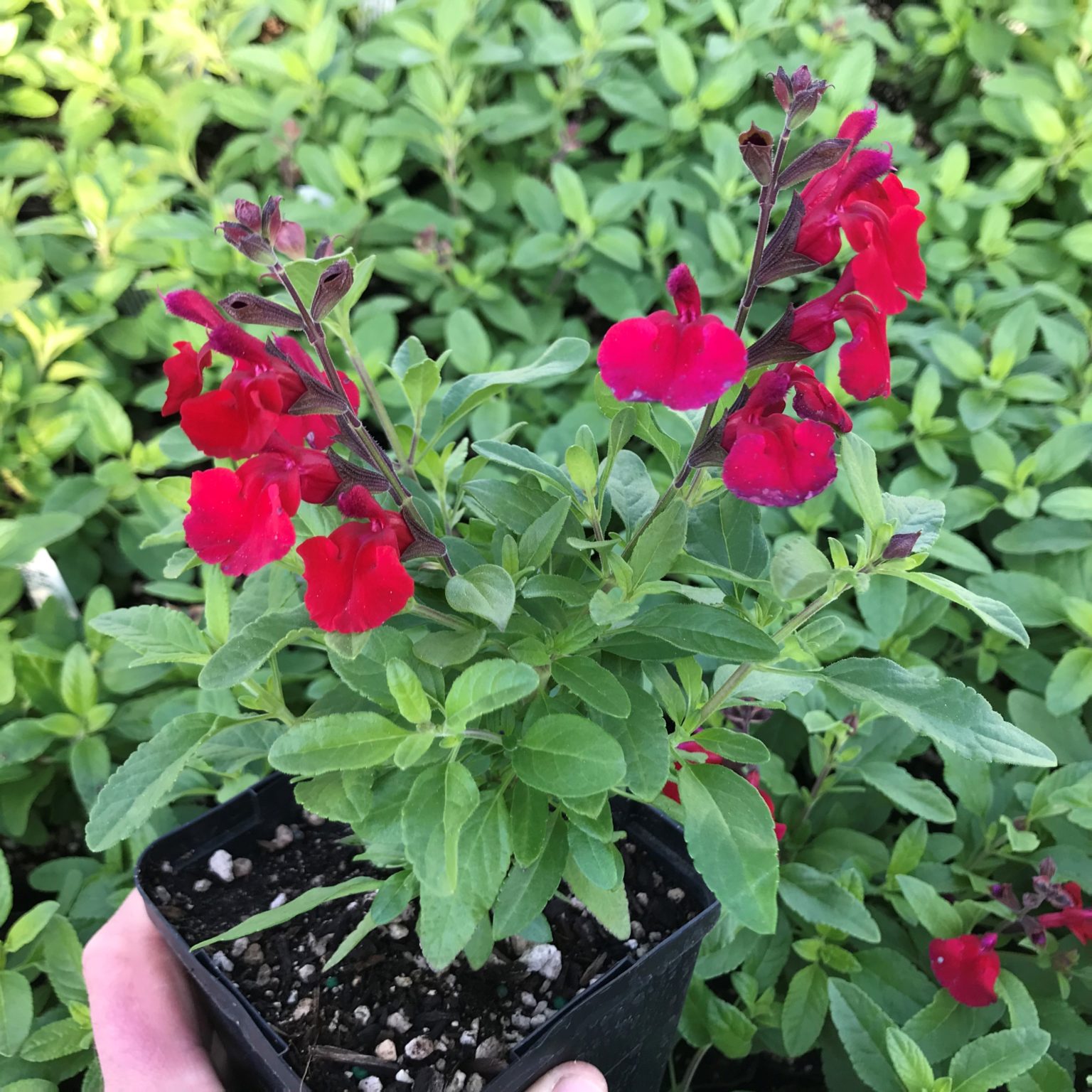
Specific epithet honors Josiah Gregg (1806-1850), botanist and explorer, who first collected this plant on a trip through Texas to Mexico in the mid 1840s. The genus name Salvia comes from the Latin word salveo meaning "to save or heal", in reference to the purported medically curative properties attributed to some plants in the genus. Autumn sage (odd name, since it starts blooming in March and continues until frost) attracts bees, butterflies and hummingbirds all the while. Flowers are attractive to butterflies and hummingbirds.

Best bloom occurs in late spring and fall, with sporadic bloom in the heat of the summer. Flower color is usually a form of red, but may also appear as orange, pink, purple or sometimes white. Two-lipped flowers bloom in whorls above the foliage on 3-6" stems from June to October. 'Salvia greggii (Autumn sage) is a herbaceous perennial native to a long, narrow area from southwest Texas, through the Chihuahuan Desert and into the Mexican state of San Luis Potosi, typically growing in rocky soils at elevations from 5,000 to 9,000 feet. Small, rounded, oval leaves (to 2" long) are aromatic when crushed. It is native to rocky slopes from western and central Texas into northern Mexico. In a garden setting, prune back to 4 inches in late winter and again by one half in August to maintain a tidy shape, or allow to grow and spread or sprawl for a more natural appearance, with occasional pruning of old wood.Salvia greggii, commonly known as autumn sage, Texas sage or red Chihuahuan sage, is a small deciduous sub-shrub that grows to 2-3' tall and as wide. Autumn sage is usually not winter hardy in Wichita Falls and the High Plains of Texas. tall, with small, mintily aromatic green leaves that are evergreen in warmer climates. It is valued for its adaptability to garden soils, its very long blooming season and as a magnet for hummingbirds. Salvia greggii, commonly called autumn sage is a beautiful, woody, herbaceous plant that is nearly evergreen in warm enough climates. Autumn Sage is a soft, mounding shrub normally 2-3 ft. There are also numerous named hybrids with Salvia microphylla and other species, which are often referred to as "Salvia greggii types". greggii is a bushy dwarf plant to 30-50cm tall, branching mainly from the base and evergreen if not cut back by frosts, with aromatic, small, ovate, downy, mid to deep green leaves.

Pale yellow, orange, salmon, fuchsia, purple, red-violet, burgundy, some with white variegation of leaves or flowers are commonly available. Salvia greggii, the autumn sage, is a herbaceous perennial plant native to a long, narrow area from southwest Texas, through the Chihuahuan Desert and into. Salvia greggii, commonly known as autumn sage, Texas sage or red Chihuahuan sage, is a small deciduous sub-shrub that grows to 2-3 tall and as wide. The normally red-flowered species also has white and pink forms and many named cultivars with slightly larger or smaller, rounder or more elongate leaves, varying growth habits from very upright to sprawling, and a wide range of colors in addition to those mentioned above. Appreciates some part afternoon shade in hot summer climates. It has small, dull pale green, glandular, aromatic leaves.

Salvia greggii is a popular, usually evergreen sub-shrub growing natively in rocky soils in Central, West and South Texas, and Mexico.


 0 kommentar(er)
0 kommentar(er)
